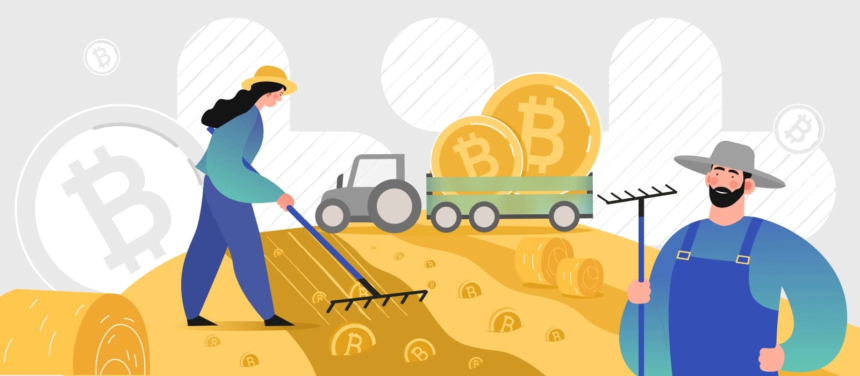Decentralized Finance, or DeFi, represents a paradigm shift in the financial world, offering users greater control and transparency compared to traditional finance. At its core, DeFi leverages blockchain technology to create financial applications that are open, accessible, and programmable without the need for intermediaries. Get better at investing in the market using Altrix Edge, which connects investors and educational firms.
Yield Farming Explained
Yield farming is a process by which users provide liquidity to DeFi protocols in exchange for rewards, typically in the form of tokens. These rewards are earned for helping to facilitate transactions on the platform and are proportional to the amount of liquidity provided.
One of the primary benefits of yield farming is the opportunity to earn a higher return on your crypto assets compared to traditional savings accounts or certificates of deposit (CDs). However, it’s important to note that yield farming also comes with risks, including smart contract vulnerabilities, impermanent loss, and market volatility.
Getting Started with Yield Farming
To start yield farming, you’ll need to choose a suitable wallet that supports the Ethereum blockchain, such as MetaMask or Trust Wallet. Once you have a wallet set up, you can connect it to a DeFi platform like Uniswap or SushiSwap.
Next, you’ll need to decide which liquidity pool to join. A liquidity pool is a smart contract that contains funds used to facilitate trades on a decentralized exchange. By adding your funds to a liquidity pool, you become a liquidity provider (LP) and earn a share of the trading fees generated by the pool.
Choosing the Right Yield Farming Pools
When selecting a yield farming pool, there are several factors to consider. These include the Annual Percentage Yield (APY) offered by the pool, the credibility of the project behind the pool, and your risk tolerance.
It’s also important to consider the impermanent loss associated with providing liquidity to a pool. Impermanent loss occurs when the price of the tokens in the pool changes relative to each other, resulting in a loss of value compared to simply holding the tokens.
Managing Risks in Yield Farming
To mitigate the risks associated with yield farming, it’s important to conduct thorough research before participating in a pool. This includes understanding the project behind the pool, the risks associated with its smart contracts, and the historical performance of the pool.
It’s also important to diversify your yield farming strategy by participating in multiple pools and using different strategies to maximize your returns. Additionally, consider using tools like impermanent loss calculators to assess the potential risks and rewards of participating in a pool.
Optimizing Yield Farming Strategies
To optimize your yield farming strategy, consider advanced techniques such as yield compounding and yield swapping. Yield compounding involves reinvesting your earned rewards back into the pool to increase your overall yield over time.
Yield swapping, on the other hand, involves moving your liquidity between different pools to take advantage of higher yields or to mitigate risks. Both techniques can help you maximize your returns and navigate the ever-changing landscape of yield farming.
Looking Ahead: Future Trends in Yield Farming
As the DeFi ecosystem continues to evolve, we can expect to see new developments and innovations in the yield farming space. These may include improvements in user experience, the introduction of new financial products, and increased regulatory scrutiny.
Yield farmers need to stay informed about these developments and adapt their strategies accordingly. By staying informed and continuously learning, you can position yourself for success in the rapidly evolving world of DeFi yield farming.
Conclusion
Yield farming represents a unique opportunity for crypto enthusiasts to earn passive income and participate in the growing DeFi ecosystem. However, it’s important to approach yield farming with caution and to be aware of the risks involved.














